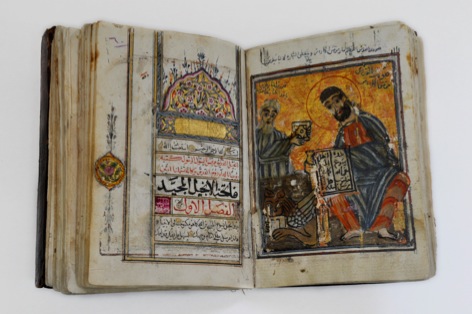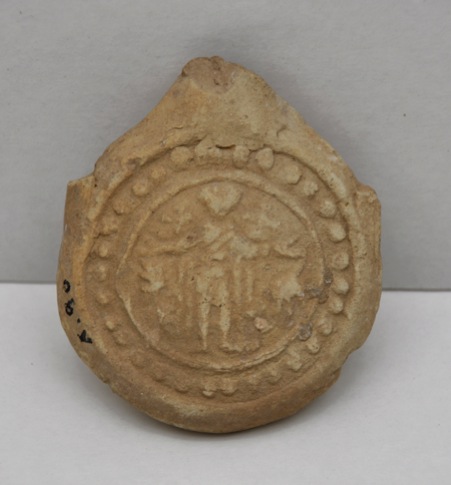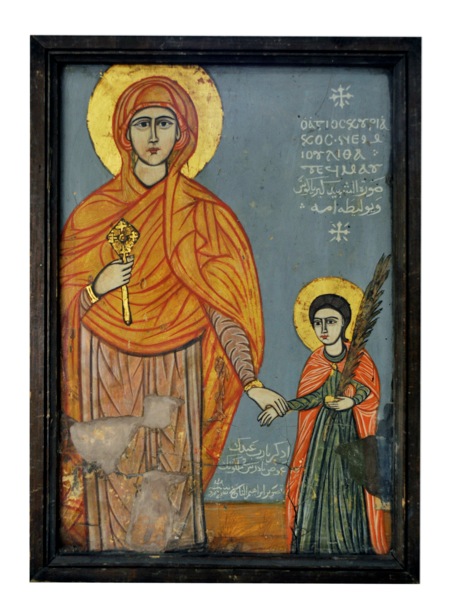St. Mark the Evangelist is said to have been the first to introduce Christianity into Egypt, when he began preaching the message of Jesus in Alexandria. The efflorescence of Christian culture did not go unnoticed by the greater Roman Empire. Threatened by the expeditious progress of the Christian religion, some Roman emperors retaliated with violent massacres, killing those that adhered to the Christian faith. The martyrs created by these attacks forever mark the Coptic religion. Christianity’s fortunes were reversed in 313 AD when Emperor Constantine the Great issued the Edict of Milan that permitted Christianity to be practised freely.

This precious gospel in Arabic depicts St. Mark the Evangelist and his symbol, the lion. The decoration on the left page demonstrates the influence of Islamic art. 1512 AM (1796 AD).

Hundreds of earthenware flasks found at the pilgrimage centre of St. Menas and far reaching corners of the Christian world point to his prominent role among the many Coptic martyrs who have been venerated since Late Antiquity. 5th – 7th century AD.
St. Julitta was arrested during the persecution of Emperor Diocletian, along with her three-year-old son, St. Cyriacus. Both were tortured so severely that St. Julitta’s faith weakened. It was only then that her son showed her a vision of paradise. Before receiving their crowns of martyrdom, the mother proclaimed her son her spiritual father and teacher. 1462 AM (1746 AD).
<< previous | next >>